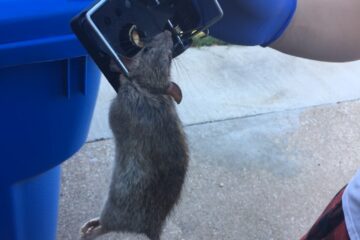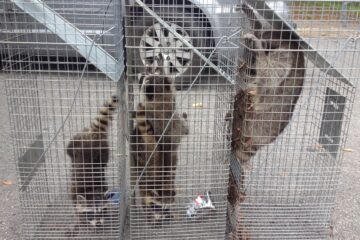Historical buildings hold great cultural and architectural significance, requiring careful preservation and maintenance. However, these structures are often susceptible to pest infestations, including rodents. Balancing effective rodent control with the preservation of historical buildings can be a delicate task. It is essential to implement pest management strategies that address rodent issues while minimizing damage to the building’s integrity. In this article, we will discuss rodent control methods specifically tailored for historical buildings, focusing on preservation and pest management.
- Inspection and Assessment:
Conduct a thorough inspection of the historical building to identify vulnerable areas and signs of rodent activity. Look for entry points, such as gaps, cracks, damaged doors, and windows, that rodents can exploit. Assess the extent of the infestation and prioritize areas requiring immediate attention.
- Sealing Entry Points:
Carefully seal entry points to prevent rodents from entering the building while preserving its historical integrity. Consider using preservation-friendly materials and techniques:
– Use materials like copper mesh or bronze wool instead of steel wool, as they are less likely to cause rust or corrosion.
– Apply low-impact sealants, such as silicone or acrylic-based products, that can be easily removed or replaced if needed.
– Consult with preservation experts or conservation professionals to ensure that sealing methods align with preservation standards.
- Integrated Pest Management (IPM):
Implement an Integrated Pest Management approach tailored to historical buildings. This approach emphasizes prevention, monitoring, and targeted control methods:
– Minimize rodent attractants by maintaining cleanliness, proper waste management, and regular maintenance.
– Install rodent-proof screens on vents and openings to allow airflow while keeping rodents out.
– Implement structural modifications, such as door sweeps and weatherstripping, to eliminate entry points.
– Use traps strategically, opting for humane traps that allow for the safe capture and release of rodents.
– Partner with pest control professionals experienced in historical building preservation to develop a customized IPM plan.
- Environmental Modifications:
Make modifications to the building’s surroundings to discourage rodent activity:
– Remove vegetation close to the building, as it can provide cover and nesting sites for rodents.
– Trim tree branches that hang over or touch the building, as they can serve as access points for rodents.
– Ensure proper drainage to minimize moisture accumulation, which can attract rodents.
- Regular Maintenance:
Consistent maintenance is crucial for historical buildings to prevent pest problems:
– Repair any structural damages, such as deteriorating wood or crumbling mortar, which can create entry points for rodents.
– Regularly inspect and clean gutters, downspouts, and drainage systems to prevent water buildup and potential rodent habitats.
– Maintain a clean and clutter-free environment to minimize potential hiding spots for rodents.
- Education and Awareness:
Educate staff, volunteers, and visitors about the importance of pest management in historical buildings. Encourage reporting of any signs of rodent activity to address issues promptly.
- Documentation:
Maintain detailed records of pest management efforts, including inspection findings, treatment methods used, and their impact on the building. This documentation helps monitor progress and assists in future preservation and pest management planning.
Rodent control in historical buildings requires a delicate balance between preservation and pest management. By conducting thorough inspections, sealing entry points with preservation-friendly methods, implementing an Integrated Pest Management approach, making environmental modifications, prioritizing regular maintenance, promoting education and awareness, and maintaining detailed documentation, historical buildings can effectively control rodent infestations while preserving their architectural and cultural significance. Collaboration between preservation experts and pest control professionals is crucial to developing customized strategies that address rodent issues without compromising the integrity of these valuable structures. With proper rodent control measures in place, historical buildings can continue to be cherished landmarks for future generations to enjoy.




